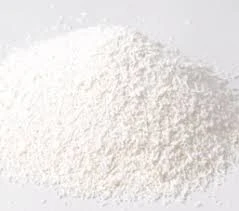
e410 food additive
Understanding E410 A Versatile Food Additive
In the world of food additives, E410 stands out as a commonly used ingredient that plays a crucial role in improving the texture, stability, and appearance of various food products. Also known as carob bean gum, E410 is derived from the seeds of the carob tree (Ceratonia siliqua), which is native to the Mediterranean region. This natural thickening and gelling agent has gained popularity due to its versatility and beneficial properties, making it an essential component in many culinary applications.
The Origin of E410
Carob bean gum is obtained from the endosperm of the seeds of the carob tree. The seeds are harvested, processed, and ground into a fine powder, which is then used in food products. The carob tree has a long history, dating back to ancient times when its pods were consumed as food. Today, the gum extracted from these seeds has found its way into a wide range of commercial products.
Functional Properties
E410 is primarily used for its thickening and gelling properties. It is an excellent stabilizer, helping to keep ingredients uniformly distributed within various food items. This is particularly important in products like sauces, dressings, and dairy products, where a stable consistency is essential to create an appealing texture. Additionally, E410 can enhance the mouthfeel of food, contributing to a more pleasurable eating experience.
Another important aspect of E410 is its ability to retain moisture, which can improve the shelf life of products by preventing them from drying out. This property is particularly valuable in baked goods and processed foods, where maintaining freshness is a key concern for manufacturers and consumers alike.
Applications in Food Products
e410 food additive

E410 is commonly found in a variety of food products, including
1. Dairy Products E410 is often used in yogurt, ice cream, and cheese to improve texture and prevent separation of ingredients. 2. Beverages Many smoothies and fruit juices incorporate E410 to enhance viscosity and create a richer mouthfeel. 3. Sauces and Dressings E410 serves as a stabilizer in salad dressings and sauces, ensuring a smooth and consistent product that doesn’t separate over time.
4. Bakery Products In baked goods, E410 can improve moisture retention, leading to softer and fresher products.
5. Confectionery E410 is also used in candies and other sweet treats to achieve the desired texture and consistency.
Safety and Regulations
E410 is generally recognized as safe (GRAS) by food safety authorities, including the European Food Safety Authority (EFSA) and the U.S. Food and Drug Administration (FDA). It is allowed in numerous food products, and its use is well-regulated to ensure consumer safety. However, as with any additive, some individuals may experience sensitivities. It is important for consumers to read labels and be aware of what they are ingesting, particularly if they have dietary restrictions or allergies.
Conclusion
E410, or carob bean gum, plays a vital role in the modern food industry, enhancing the quality and stability of a wide array of products. Its natural origin and versatile functionality make it a favored choice among food manufacturers. While it is generally safe for consumption, consumers should remain informed about the ingredients in their food. As the industry continues to evolve, understanding additives like E410 will empower consumers to make knowledgeable choices about their diet and health. With its many applications and benefits, E410 is a prime example of how food science continues to innovate and improve the way we enjoy our meals.
-
Buy High-Quality Trichloroisocyanuric Acid for Sale | TCCA 90% SupplierNewsAug.30,2025
-
Pure Sodium Dichloroisocyanurate Dihydrate | Powerful DisinfectantNewsAug.29,2025
-
Industrial Chemicals: Quality & Purity for Every IndustryNewsAug.28,2025
-
Nitrile Rubber Honoring Strict Production StandardsNewsAug.22,2025
-
Aspartame Ingredients Honoring Food Safety ValuesNewsAug.22,2025
-
Fertilizer for Balanced Plant NutritionNewsAug.22,2025
-
Cyanide Gold Processing with High Purity AdditivesNewsAug.22,2025
Hebei Tenger Chemical Technology Co., Ltd. focuses on the chemical industry and is committed to the export service of chemical raw materials.
-

view more DiethanolisopropanolamineIn the ever-growing field of chemical solutions, diethanolisopropanolamine (DEIPA) stands out as a versatile and important compound. Due to its unique chemical structure and properties, DEIPA is of interest to various industries including construction, personal care, and agriculture. -

view more TriisopropanolamineTriisopropanolamine (TIPA) alkanol amine substance, is a kind of alcohol amine compound with amino and alcohol hydroxyl, and because of its molecules contains both amino and hydroxyl. -

view more Tetramethyl Thiuram DisulfideTetramethyl thiuram disulfide, also known as TMTD, is a white to light-yellow powder with a distinct sulfur-like odor. It is soluble in organic solvents such as benzene, acetone, and ethyl acetate, making it highly versatile for use in different formulations. TMTD is known for its excellent vulcanization acceleration properties, which makes it a key ingredient in the production of rubber products. Additionally, it acts as an effective fungicide and bactericide, making it valuable in agricultural applications. Its high purity and stability ensure consistent performance, making it a preferred choice for manufacturers across various industries.





